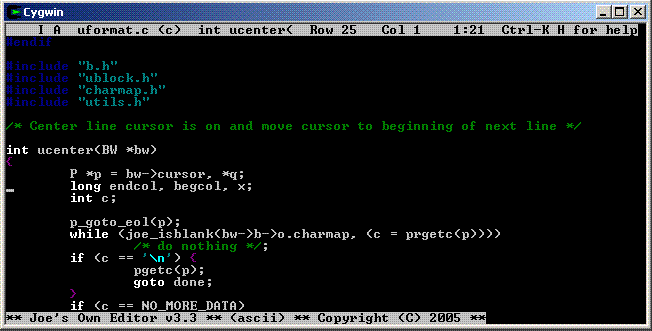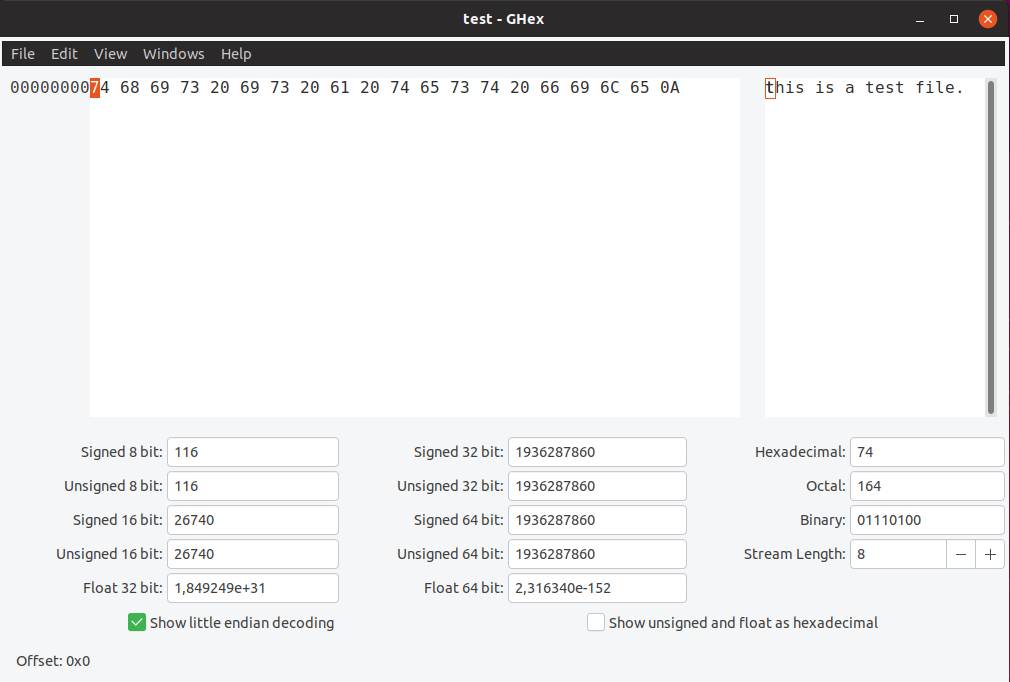

It links them to any libraries the program uses. The linker checks each object file for function calls to libraries.
Linux binary editor command line code#
These contain the machine code the computer will eventually execute when the finished program runs, together with information for the linker. When source code is compiled by a compiler, one or more object files are created. The file called “wd.o” is an object file. Binary files, though, are more of a challenge.įor example, the files “hello” and “wd” are binary executables.
Linux binary editor command line software#
Image files can be viewed, sound files can be played, and document files can be opened by the appropriate software package. Using file with Binary Filesīinary files are more of a “black box” than others.

For example, if you have a file with the “.c” extension, containing standard plain text but not source code, file doesn’t mistake it for a genuine C source code file: file function+headers.h file makefile file hello.cįile correctly identifies the header file (“.h”) as part of a C source code collection of files, and it knows the makefile is a script. Interestingly, even with plain-text files, file doesn’t judge the file by its extension. Using file on media, such as image and music files, usually yields information regarding their format, encoding, resolution, and so on: file screenshot.png file screenshot.jpg file Pachelbel_Canon_In_D.mp3 They’re a mixture of document, source code, executable, and text files. We’ve got a collection of different file types in our current directory. Let’s start our investigation by using the file command. The tools described here were already installed on the Manjaro 20, Fedora 21, and Ubuntu 20.04 distributions we used to research this article. It wants proof and looks inside the file to find it. Linux isn’t like that, as you’ll soon see. You can call it gullible or trusting, but Windows assumes any file with the DOCX extension really is a DOCX word processing file. Some operating systems, like Windows, are completely guided by a file’s extension.

This allows a file to be explicit about its format and content. Sometimes, the file type is inferred from a distinctive aspect of the internal organization of the data itself, known as the file architecture. This might be a few signature bytes at the very beginning of the file. It wouldn’t make sense to try to open a PNG file in an MP3 music player, so it’s both useful and pragmatic that a file carries with it some form of ID. Files usually have characteristics that allow software packages to identify which type of file it is, as well as what the data within it represents.


 0 kommentar(er)
0 kommentar(er)
